Do you know the key difference between a MIDI controller and a synthesizer?
While they serve complementary roles in music production, MIDI controllers and synthesizers have distinct differences when it comes to sound generation, connectivity, design focus and more.
Let’s dive in to unravel how these two tools compare and why it matters.
What is the Difference Between a MIDI Controller and a Synthesizer?
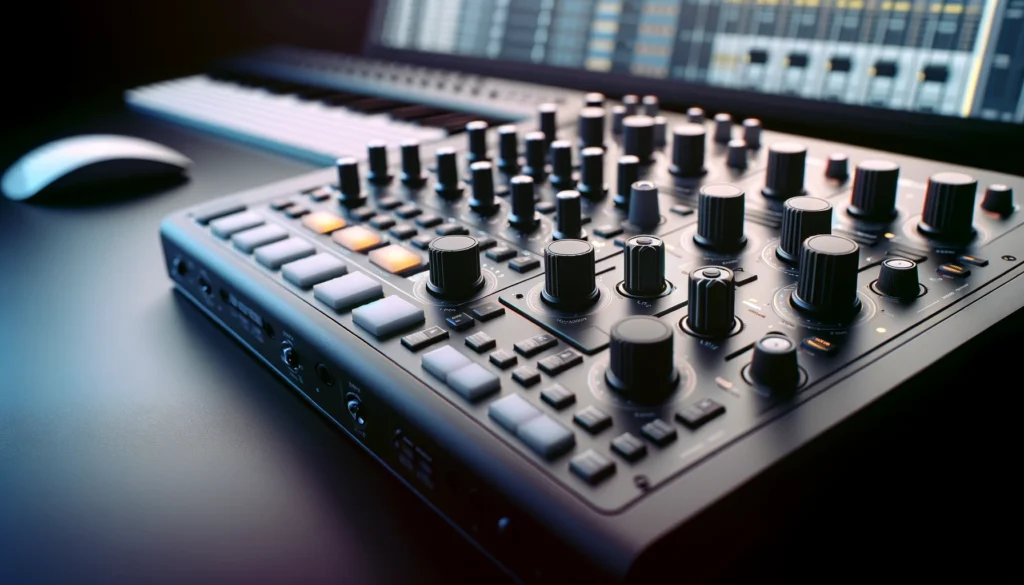
In short, a MIDI controller transmits data while a synthesizer creates sound itself.
We will explore their differences more below, but this core distinction around sound generation is the key thing separating these two tools.
What Is A MIDI Controller?
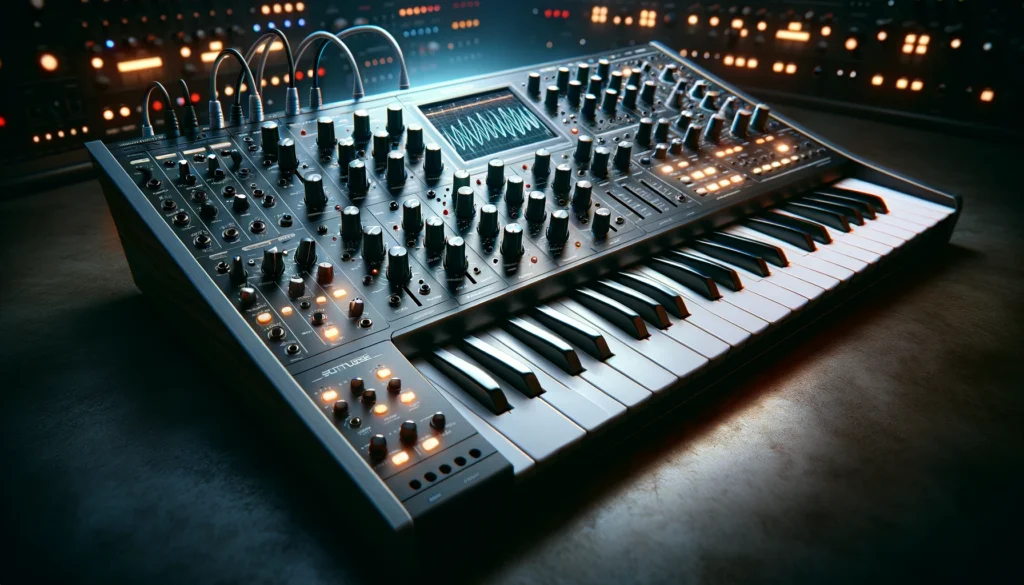
A MIDI controller is a device that allows for real-time control over external sound modules or software instruments.
MIDI stands for Musical Instrument Digital Interface.
Controllers themselves do not generate any sound on their own.
Instead, they send MIDI data to trigger notes and manipulate parameters like pitch, volume, panning, vibrato, and effects on connected gear.
The most common types of MIDI controllers include keyboard controllers, drum pad controllers, and standalone boxes with knobs, faders and buttons.
Because they do not contain their own sound engine, MIDI controllers tend to be more affordable, portable and compact in size compared to full-fledged synthesizers.
Music producers, performers, and hobbyists utilize them to play and control virtual instruments, add expressiveness to presets, and manipulate synth parameters in intuitive ways.
What Is A Synthesizer?
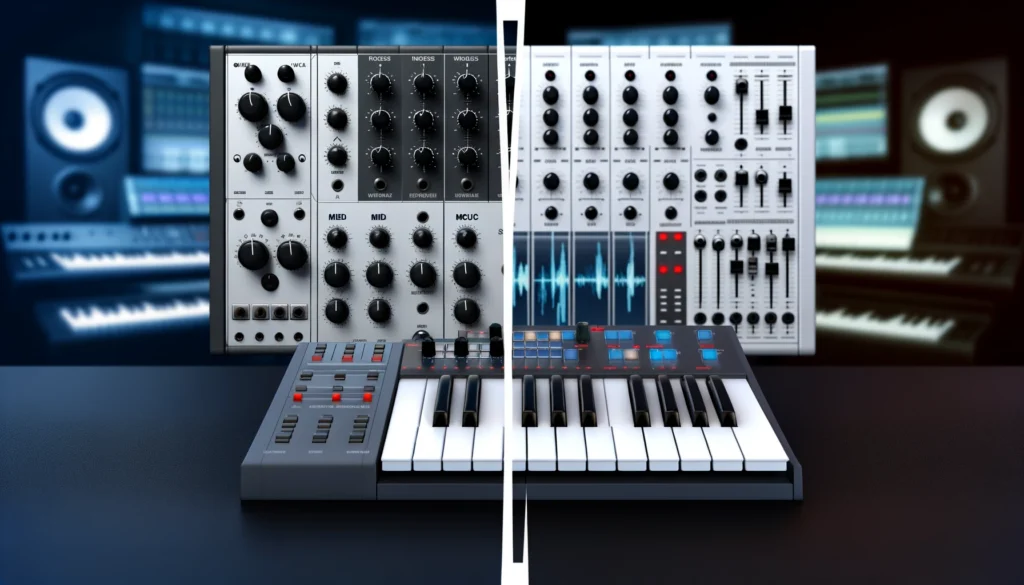
A synthesizer is an electronic musical instrument that actually generates and produces sound, unlike MIDI controllers.
Synths contain components like oscillators, filters and amplifiers to shape the harmonic content and color of the tones produced.
Larger keyboard synthesizers allow for playing and manipulating the generated sound in real time without the need for any external sound sources or computer software.
There are many types of synthesizers, including analog, digital, FM synthesis, additive synthesis and more.
Standalone hardware units are available in a variety of keyboard sizes from compact 2-3 octaves up to full 88-key piano sizes.
Virtual software synthesizers can also be played via MIDI but generate the sounds inside your Digital Audio Workstation (DAW).
In general, synthesizers tend to be more expensive, bulkier in physical size, and put more emphasis on the actual sound creation engine compared to MIDI controllers which focus mainly on the control interface.
Key Differences Between Controllers and Synthesizers
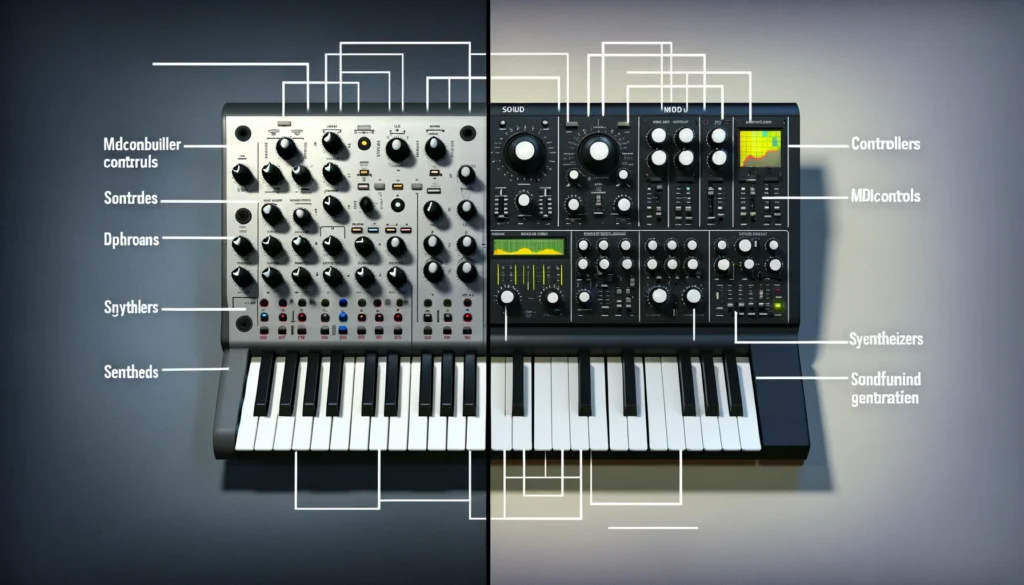
While MIDI controllers and synthesizers overlap in some functionality and are often used together in music production, there are several key differences between these two tools:
Sound Generation
The core difference is that synthesizers directly generate and produce sound themselves.
MIDI controllers only send data and require connection to a hardware synth module or software instrument to make any noise.
Connectivity
Because they lack built-in sounds, controllers need to be connected by a MIDI cable or USB to trigger sounds on something else.
Synthesizers can be played as standalone instruments without any additional gear, or controlled further via MIDI.
Focus of Design
Controllers place emphasis on the hands-on control interface for parameters with pads, knobs and faders.
The synth engine is an afterthought.
Synthesizers focus engineering effort on the quality of the sound generation capabilities using analog modeling, samples and other synthesis techniques.
Affordability & Portability
MIDI controllers tend to be more affordable and portable than full-featured synths.
Without complex oscillator and amplification circuitry, they take up less space and processing.
Keyboard synthesizers span a huge range but can get quite large and heavy with robust keybeds and multiple oscillators or sound shaping components.
Keys & Pads
Most MIDI keyboard controllers have at least 25-49 velocity sensitive mini-keys for playing notes.
Some drum pad grid controllers forgo keys entirely.
Synthesizers always have keys and range more broadly from 2-3 mini octaves up to full weighted 88-key piano boards.
Some synth don’t have many knobs or pads for tactile control of sound parameters.
Using MIDI Controllers and Synthesizers Together
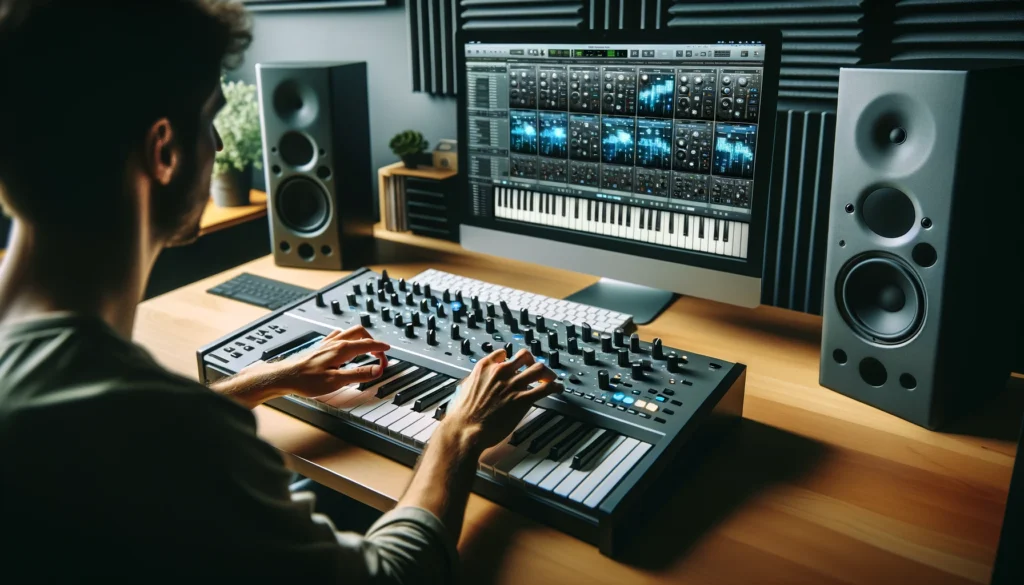
While they have their differences, MIDI controllers and synthesizers pair very well together in a music studio setup.
They really shine when combined for production use cases like these:
Hardware Control of Software Instruments
In the box music producers often use keyboard MIDI controllers to play virtual software synthesizers like Native Instruments Massive or u-he Diva.
This allows for modulation wheel curves, aftertouch, velocity and other expressive playing techniques no possible with just a mouse and computer keyboard.
Quick Sound Manipulation
By connecting an external MIDI controller to a hardware synthesizer, producers have deeper real-time control options for synth parameters via knobs and sliders instead of menu diving.
This helps to shape sounds faster and more intuitively.
Capture Ideas Quickly
Keyboard players will often use a master MIDI keyboard controller when composing to quickly lay down chord progressions, basslines, or improvised melodies.
These captured MIDI notes can later trigger sounds in a DAW environment.
Best of Both Worlds
Using the tactile control interface from a MIDI controller along with the sonic palette of a synth combining analog modeling, samples and digital waveforms gives producers access diverse soundscapes with hands-on manipulation – the best of both words.
Additional Uses Cases and Options
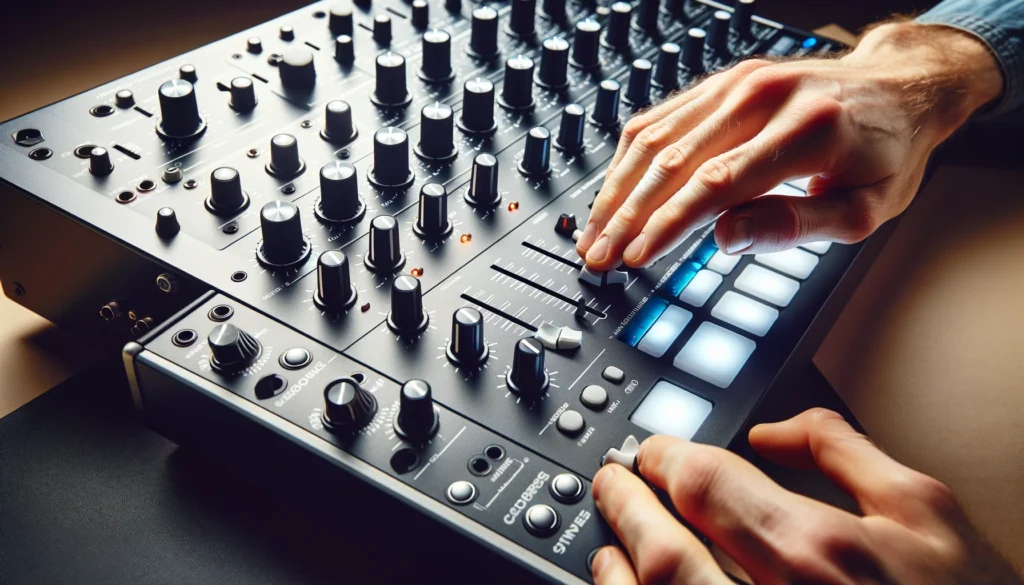
Beyond the most common ways MIDI controllers and synths work together, there are always more creative use cases possible as music technology evolves.
Next-Gen Integration
Modern digital instruments sometimes combine both control interfaces and sound engines in the same unit.
Synths may have grid pads alongside keys for launching clips.
Some controllers offer built-in polyphony and sound shaping options via analog filters to blur the lines.
MIDI 2.0 and CV/Gate Control
Emerging connectivity specs like MIDI 2.0 and Control Voltage may change how controllers talk to instruments.
Bi-directional communication and increased resolution pave the way for tighter playing technique capture and parameter manipulation.
Unique Setups
Depending on needs, some producers will only use keyboards to input notes. Some DJs might use MIDI pads for clip launching alongside turntables.
Controllers can send MIDI to drive light shows.Synthesizers can process external instruments in creative ways.
Nearly any combination is possible.
Conclusion
In summary, while MIDI controllers and synthesizers have some functional overlaps, they play complementary roles in music production setups.
Understanding their core differences helps producers select the right gear for their needs and make the most of both tools.
Using controllers and synths together unlocks expressive playing possibilities and diverse sonic options to fuel creativity in the studio environment.
As technology progresses, the connection between tactile control interfaces and versatile sound engines will only get faster, tighter and more intuitive.
